Field Experience in EAS
All students in EAS have opportunities for experiential learning with the Department's field-based courses. Field work enable students to put what they have learned in to practice. We offer field schools in all of our programs.
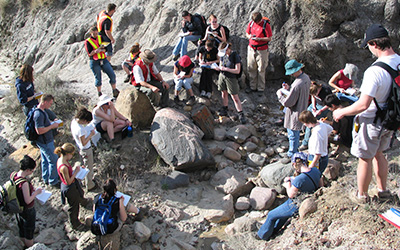
EAS 110
EAS 110 is an introductory 7-day field school for students in first or second year who have an interest in the earth sciences. Students travel from Edmonton to southern Alberta, into south-eastern BC and up to Jasper National Park before returning to Edmonton. They learn about the geologic history of the region, including why it looks the way it does, and gain an appreciation of our natural landscape. Skills taught include how to make and record field observations, the use of a compass, and the taking of field notes. This is a fun class designed to provide students from any discipline the opportunity to explore and learn about the corner of the world where they currently live. The course is offered at the end of winter term.
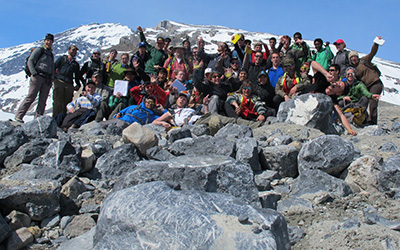
EAS 234
EAS 234 is a 12-day Geology Field School that takes place in Alberta's 'Rocky Mountains'. The field school has been conducted in Jasper, near Nordegg and at Crowsnest Pass, Alberta. Students observe sedimentary rock outcrops and study many of the important geological units of western Canada, from Precambrian to the present. Students learn to describe and measure outcrops, and prepare a geological map that displays and interprets their own geological data and observations. Students learn how to make good compass measurements, record field data in field books and on outcrop description logs, read and interpret maps, and make Quaternary cover and bedrock maps. Students find this course challenging and extremely rewarding. It is offered as a winter term course and goes out at the end of April. Completion of the course is required for students in Geology, Environmental Earth Sciences, and Paleontology Honors and Specialization programs.
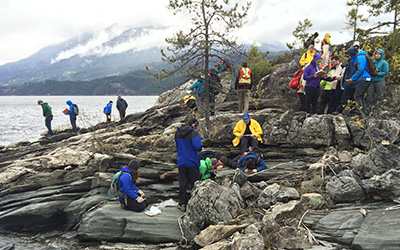
EAS 333
EAS 333 is a 12-day Advanced Geology Field School that crosses through some of the same rocks seen in EAS 234 and 237, into igneous and highly metamorphosed rocks in the interior of British Columbia. Students build on the skills developed in the Geology Field School, working with a variety of rock types at a range of scales. Some days are spent on roadside geology tours, while others are spent walking forest access roads or lakeside outcrop. Students are challenged with daily assignments and a final 3-day mapping project near Cranbrook, B.C. The traditional mapping tools are complemented by state-of-the-art tablets and digital mapping software. In this way, EAS 333 is a capstone course that provides students with exceptional experience relevant to future careers in the Geosciences. The course is offered at the end of the winter term and is required for students in Geology Honors and Specialization Programs.
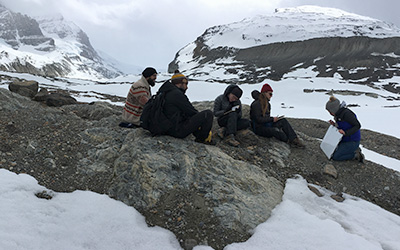
EAS 354
The EAS 354 Environmental Earth Science field school in the Rocky Mountains follows the Athabasca and North Saskatchewan River systems from their headwaters in the glaciated Canadian Rocky Mountains of Jasper and Banff National Parks and along their paths through the Foothills towards the plains of central Alberta. Students gain hands-on experience in a range of data collection techniques including water sampling and stream monitoring, and describing and mapping surface sediments and landforms, and learn the challenges of studying dynamic mountain environments. These skills are vital to the fields of environmental geochemistry and microbiology, and to the interpretation and deciphering of landscape histories. The field school also emphasizes professional skills through tight integration of field-based activities, daily computer-based data analyses, short industry-style reporting exercises, teamwork and written proposals for future work.
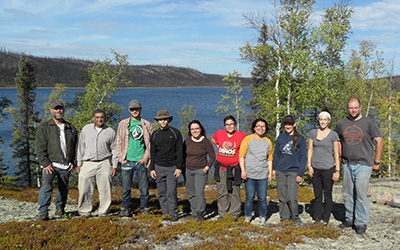
EAS 429
The EAS 429 Northwest Territories Geology field school provides advanced Geology students with an excellent opportunity to hone the field skills learned in the second and third year field schools by applying them in a real-world, far-north setting. In this field school, a select group of 6 students map alongside EAS professors and Northwest Territories Geological Survey geologists in an understudied area of the NWT. The field school is held at different remote field sites within a ~250 km radius of Yellowknife. Travel to the field area is typically by float plane, with transport within the field area by boat or on foot. Students participating in the NWT field school learn not only geological skills but also gain valuable wilderness experience that will be of great benefit in future careers in exploration geoscience.
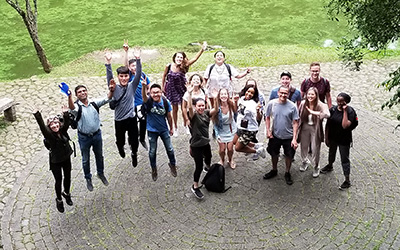
HGEO 499/599 & PLAN 499/599
The Human Geography and Planning field school engages students in activities including site visits, walking tours and meetings with professionals. Students apply their course-based knowledge and skills to specific environments, collect and analyse original data as members of small teams, and undertake projects with tight deadlines and report findings in a professional manner in various formats. Themes examined in recent years include downtown redevelopment; hazard mitigation and emergency response; nature in the city; planning for agricultural areas; and urban history. In 2018-19, the field school took place in Curitiba, Brazil. The students spent a rewarding two weeks exploring themes such as land use and urban mobility, informal settlements, city-region context, and migration. Local lectures and field trips included meetings with state and municipal officials, university faculty members and students, and activists and advocates from the non-government sector. The course is offered at the end of the winter term and is required for students in the Human Geography Honors Program.
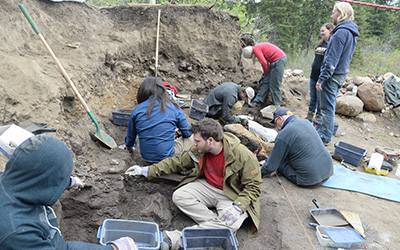
PALEO 400
The PALEO 400 Paleontology field school teaches students the techniques of collection, curation and analysis of fossils at a major dinosaur bonebed site in the city of Edmonton. Each student completes assignments in the field and prepares a written report or presentation based on data acquired and methods learned during the field component. This is a Fall term course, with the field school taking place in August.